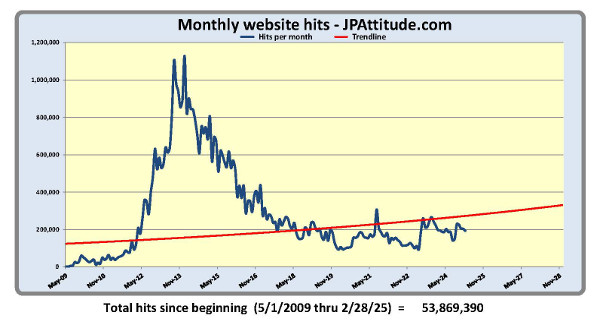The water under Noah’s Ark
March 28, 2014
 This weekend Director Darren Aronofsky’s version of Noah’s Ark will be in movie theatres. According to people invited to early screenings, the story in the movie doesn’t much resemble the Biblical version. Believe it or not, Hollywood managed to make a movie about Noah without once using the word “God” in the dialogue. Instead of being about morality, judgment, and God’s mercy, the movie is about over-population and environmental degradation.
This weekend Director Darren Aronofsky’s version of Noah’s Ark will be in movie theatres. According to people invited to early screenings, the story in the movie doesn’t much resemble the Biblical version. Believe it or not, Hollywood managed to make a movie about Noah without once using the word “God” in the dialogue. Instead of being about morality, judgment, and God’s mercy, the movie is about over-population and environmental degradation.[Insert snicker here.]
If there is one thing we’ve learned about liberals over the last few years, there is nothing they cannot blame on climate change. It was not man’s wickedness and turning away from God that doomed him to a Great Flood, according to Hollywood, but rather his carbon footprint—all of them except Noah driving SUVs to the temple on Saturday, apparently.
There are advantages to owning a website, chief among them being the ability to write about any subject that fires your imagination. On the other hand, the disadvantage is that everything you say remains stored in the cloud, somewhere, forever; so if you jump the rails and write something stupid, you’re stuck with it. A writer with a vivid imagination, a tendency toward over-enthusiasm, and a broad range of interests—like me—could easily end up sounding borderline crazy if he isn’t careful about doing the necessary legwork and documenting facts.
If the preceding paragraph sounds like the preamble to an admission of error, it’s not. Preamble to a brag more like it. JPAttitude.com has been remarkably accurate, even during flights of fancy and forays into conjecture. I’m no prophet in the Biblical sense, like Noah, but by golly you can rely on the information and conclusions provided here. I could write follow-ups every day of the week for six months straight detailing how columns were proven correct by subsequent events, and if—a big if—I am ever wrong about something I’ll announce it in bold print on the front page.
Okay, mea culpa, four years ago, in a column titled, “Water water everywhere,” there was a mistake. I relied upon a source of information that had the decimal in the wrong place but since the number in question, once corrected, would not render erroneous the general point of the column and since fixing that number would also require fixing two pie charts... lazy me, I didn’t make the correction.
Now it’s come back to haunt me. With the release of Noah today, I want to re-visit that four-year-old column because subsequent events and discoveries have, if not thoroughly validated, at least buttressed my hypothesis that there is plenty of water in the world, even in thirsty places like California. Furthermore, the growing evidence that there is much more water on Planet Earth than we realize in turn buttresses the historical authenticity of the Bible’s version of the story of Noah and the Great Flood.
More and more people have joined me in realizing that California’s current “drought” is caused by politics, not lack of water. Here is a recent editorial in Investor’s Business Daily:
“President Obama visited California’s drought-hit Central Valley Friday, offering handouts and blaming global warming. But the state’s water shortage is due to the left’s refusal to deal with the state’s water needs.”And Congress, striving to help, is looking at California’s neglected infrastructure and unnecessarily large allotments of water for delta smelt, not Global Warming:
“Government agencies have been studying five major water storage projects for nearly two decades, with nothing to show for the effort so far.”Twenty years of knowing you need more water but doing nothing about it—that is not a climate problem, it’s a procrastination problem.
Four years ago I confessed that my belief in untapped reservoirs of underground water was inspired by the Dr. Seuss book, McElligot’s Pool. Stop laughing. I know it’s a whacky source for a hypothesis. Nevertheless, over the last four years a number of news stories have given me affirmation. For instance, this story, in the International Business Times two years ago:
“A new aquifer, called Ohangwena II, has been found in northern Namibia. The vast water deposit straddles the border between Namibia and Angola—on the Namibian side, it covers about 1075 square miles. According to Martin Quinger, a project manager from the German Federal Institute for Geoscience and Natural Resources, this is a monumental find. The amount of stored water would equal the current supply of this area in northern Namibia for 400 years, which has about 40 percent of the population... In Namibia, finding an aquifer is akin to striking gold. The country’s land is the driest in all of sub-Saharan Africa...”So they found 400 years worth of water deep underground. Go ahead, laugh at Dr. Seuss now, I dare you. In case you’ve never seen pictures of Namibia, you probably have no idea how dry the place is. Here’s a photograph to put the exclamation mark on this discovery of “five billion cubic metres of water:”

(Looks like a dried-up river or lake between the dry sand and the dry mountains.)
Speaking of deserts in Africa, the first thing that comes to most minds is the Sahara in North Africa. The Sahara Desert is that very-large bone-dry area stretching from Algeria across Libya and Egypt into Sudan. A few months before the Namibia story, the Daily Mail reported that vast amounts of water have been discovered beneath that very area:
“Huge reserves of underground water in some of the driest parts of Africa could provide a buffer against the effects of climate change for years to come, scientists said. Researchers from the British Geological Survey and University College London have for the first time mapped the aquifers, or groundwater, across the continent and the amount they hold. ‘The largest groundwater volumes are found in the large sedimentary aquifers in the North African countries Libya, Algeria, Egypt and Sudan,’ the scientists said in their paper.” [Bold font by me.]Last year the Telegraph reported the discovery of giant reservoirs of water under Kenya. Here is a website that talks about huge underground rivers beneath the Mojave Desert, in the Southwest of the United States, way beyond my conjecture about California water four years ago. And in an ironic twist, during the 1967 Arab-Israeli War many Egyptian soldiers in the Sinai Desert died of thirst never knowing that 600 to 900 feet down there are huge reservoirs of potable water.
The Israelis discovered the water after kicking the Egyptians’ asses back to Cairo and taking possession of the Sinai. Maybe Israelis are Dr. Seuss fans.
“So what does all this have to do with Noah’s Ark?” you ask, reasonably.
One thing that always bothered me about the Biblical story was the amount of water that would be required to reach a point where:
“...the waters prevailed exceedingly upon the earth; and all the high hills, that were under the whole heaven, were covered. Fifteen cubits upward did the waters prevail; and the mountains were covered.” Genesis 7:19–20That’s a lot of water. Too much to seem realistic.
Another thing that always bothered me was “the rain [that] was upon the earth forty days and forty nights.” It seems to me that rain wouldn’t do the trick because even the hardest downpour drains away too fast to cover hills and mountains, and, anyway, the clouds required to produce that much water are inconceivable. Granted that God can produce miracles, He generally produces them in a physically explainable fashion.
I lean toward interpreting the Bible literally because too many times over the course of my lifetime I’ve seen the “figuratively speaking” interpreters end up looking foolish when physical evidence is discovered that corroborates the Biblical version of events. There was a time, for example, when David was widely considered to be mythical, invented by fifth or sixth-century BC Jewish scribes to boost morale. Then, in 1993, archeologists found an inscribed eighth-century BC stone tablet which describes the king of Damascus killing the king of Israel—an event described in the Bible by the way (2 Kings 13:1-25)—which describes the dead king as being of the “house of David.”
So if the Bible is best taken literally, where did all that water come from?
Well, first of all, the Bible clearly states that the waters of the Great Flood came from more than rainfall:
“In the six hundredth year of Noah’s life, in the second month, the seventeenth day of the month, the same day were all the fountains of the great deep broken up, and the windows of heaven were opened.” Genesis 7:11Again, when God relented and ended the Flood, the source of the water is described as more than just rain:
“And God remembered Noah, and every living thing, and all the cattle that was with him in the ark: and God made a wind to pass over the earth, and the waters asswaged; The fountains also of the deep and the windows of heaven were stopped, and the rain from heaven was restrained...” Genesis 8:1Lo and behold: two weeks ago, Nature published an article about a rare diamond found in Brazil that confirms a theory about water existing beneath the upper mantle of Planet Earth—hundreds of miles deeper than we ever drill for anything. How much water? Quoting the article:
“It translates into a very, very large mass of water, approaching the sort of mass of water that’s present in all the world’s oceans.”That’s a lot of water.
This doesn’t prove that the Biblical version of Noah’s Ark is correct, of course, but it does resolve the question of whether Planet Earth has enough water to get the job done. Enough water exists, and then some. If something—or Someone—caused this newly-discovered water in the mantle to “fountain [up from] the great deep,” there is more than enough water to cover the “high hills [and] mountains.”
McElligot was really on to something.
“And the LORD said, My spirit shall not always strive with man, for that he also is flesh: yet his days shall be an hundred and twenty years.” — Genesis 6:3
“The world’s oldest man, a 112-year-old self-taught musician, coal miner and gin rummy aficionado from western New York, has died. He was 112.” — Fox News, February 14, 2013
From Grand Rapids, Michigan, USA Tweet
comments powered by Disqus













